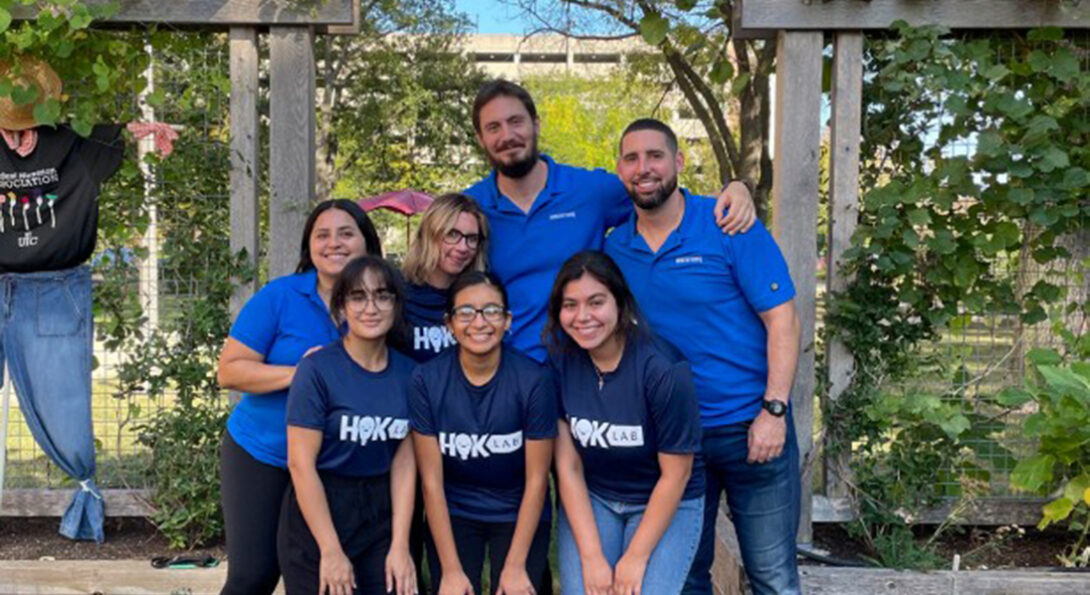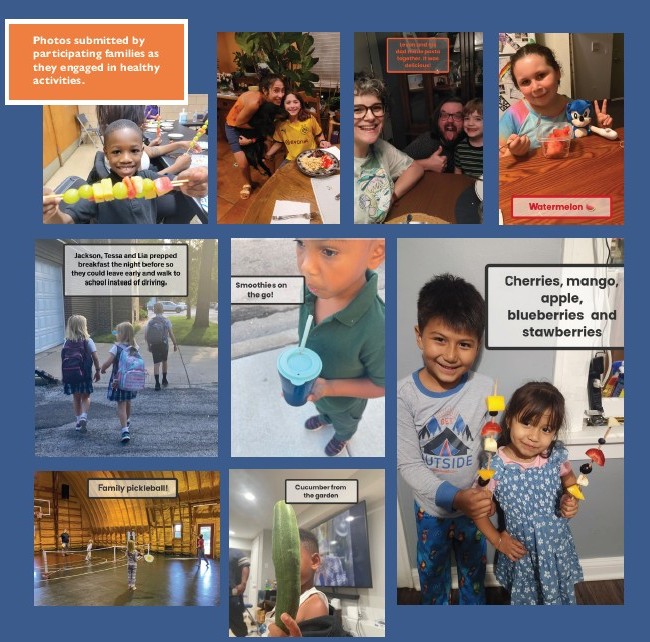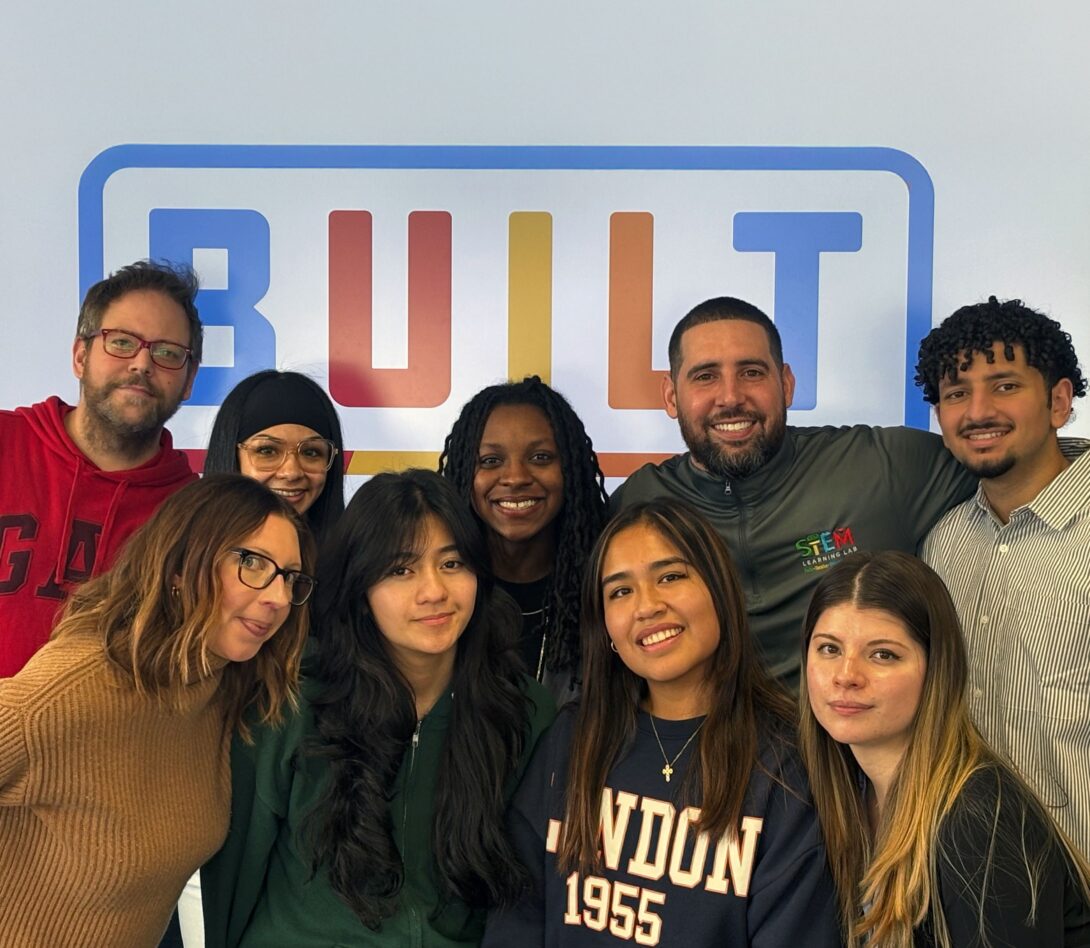Family health from the ground up

The BUILT program promotes sustainable routines around food, sleep and movement.
Text
For Eduardo Bustamante ’13 PhD KN, making material improvements to child health requires a focus on the basics: nutrition, sleep and exercise. As director of the Healthy Kids Lab at UIC and KN associate professor, Bustamante has conducted plenty of research on the benefits of childhood health behaviors to advance science, but his primary objective now is to help parents take advantage of those benefits, encouraging simple changes that improve health for the whole family.
The BUILT family lifestyle program — Be Unstoppable In Life Together — was designed to promote evidence-based health routines families can keep. Bustamante has called in Chicago families, community organizations, institutional supporters and scientific thought leaders to work together on promoting healthy routines at home.
Quote
We spend a lot of time in our field researching why health behaviors are really important for people,” Bustamante said, “but the problem is that people just don’t actually do those behaviors. Intervention studies come and go, and we know that the progress made won’t be sustained. So I wanted to do something different.
A Holistic Approach
The BUILT program, run as an extension of existing afterschool or summer camp programs, offers six weeks of instruction on creating practical morning, afternoon and evening routines. The curriculum is designed for families during the school year and reworked for kids in the summer. Informed by current research on the effects of nutrition, rest and movement on child cognition and brain development, BUILT’s approach is holistic, combining each of these pillars to generate a whole-week routine that fits families’ goals and resources.
Mandy Vukits, KN PhD candidate and BUILT facilitator, believes this is one way the program is unique. She and seven other UIC-affiliated facilitators are working with Bustamante to implement, assess and refine the curriculum, creating easy lessons and activities out of key findings in current health research.
“We work really hard to make the activities engaging,” said Timber Terrell, a KN PhD student on the BUILT team. “We don’t want to just give kids a worksheet; we’ll make it a scavenger hunt instead.”
After a 90-minute session with BUILT program facilitators in their school or park, families are sent home to complete challenges that put their learning into practice. Kids are encouraged to surprise a family member with a healthy snack, for example, and then post a picture of their reaction to a BUILT community message board. Other home challenges ask kids to organize a family foot race or read a book with a parent before bedtime. Completed home challenges earn participants tickets, which can be redeemed for kid prizes or adult raffle entries.
Parental involvement is another way BUILT stands apart from other health initiatives. To establish healthy routines at home, Bustamante knows he needs buy-in from the whole family unit.
“It’s easy to overlay BUILT onto another organization’s kid programming,” he said. “We just have parents stay an extra 90 minutes at pickup time. And more than anything, kids value that time with parents. Involving parents contributes to staying power.”
Organic Partnerships

Healthy habits developed in the program are also sustained, in part, because BUILT works with organizations that already play a major role in family life — most notably, Chicago Park District. Bustamante has had a long professional relationship with the park district, beginning with research he conducted as a graduate student on a parks-related jobs program for youth. At that time, he met Colleen Lammel-Harmon, wellness manager for the park district, and the pair developed a mutual appreciation for each other’s work.
“I’ve published a lot on exercise and ADHD,” Bustamante said, “and Colleen had read some of my studies, so we connected on that. When you’re a junior scientist, to meet somebody who’s read your work and knows it — it’s really cool.”
Years later, after piloting BUILT at UIC’s Comprehensive Attention Deficit Hyperactivity Disorder Clinic, the COVID-19 pandemic hit and necessitated changes to the offerings. Bustamante quickly reached out to Lammel-Harmon about implementing BUILT in parks across the city.
The collaboration is successful due to a shared goal of improving health outcomes for Chicago’s youth, but the trusting relationships between institutional leaders has also played a major part in BUILT’s expanding success.
BUILT began as a research grant from the National Institute of Minority Health and Health Disparities and has been funded for the
past two years by Chicago Partnership for Health Promotion, led by Daylan Dufelmeier. With support from organizations like these, BUILT can run as an extension of existing Chicago Park District and Chicago Public Schools programming, like summer camp or afterschool care. These partnerships give BUILT access to a large segment of kids facing special obstacles to healthy living, such as poverty, disability and racial marginalization.
For leaders in these spaces, the collaboration is akin to recipe development. All parties are interested in making one dish, but they are equally interested in publishing the recipe for others to make at home.
“I think that’s a really good way to look at it,” said Lammel-Harmon. “It’s like, what does this recipe need from each of us in order to put it out publicly? At some point, when we specifically are not here, how do we keep these successes going?”
Continual involvement from UIC students and faculty has also been critical for BUILT.
Since the program’s inception six years ago, 39 undergraduate and 10 graduate students from AHS have helped to develop, refine and implement BUILT at parks, schools and UIC’s ADHD clinic.
Measuring Success

BUILT’s approachable curriculum and tie-in with trusted community organizations is an evidence-based model other health programs can
follow. More importantly, the formula they’ve developed works for real families. Approximately 240 children have participated in the BUILT Kids summer program thus far, and another 80 children accompanied by 50 parents have participated in the school-year joint program, BUILT Families.
“We have measures of nutrition; we have accelerometer data for physical activity and sleep; we have mental health outcomes and we have
home environment outcomes,” Bustamante said. “We’re measuring whether they’re actually changing dietary intake, whether it’s changing kids’ behavior, what’s the amount of conflict in the house, all of that stuff. We have a lot of data that we report, publish and use to continually improve the program.”
Bustamante hopes to one day facilitate a randomized clinical trial comparing outcomes of kids in BUILT-affiliated parks with those of kids in other parks. In the meantime, the most powerful supplement to quantifiable health improvements is the feedback of the participants.
“Pretty universally, when AHS students show up in their BUILT shirts, you can see the kids go nuts,” Bustamante said. “They’re all fighting to get in the room and they’re excited to see the students. Those relationships can be really sweet.”
“These small chunks of time spent working on BUILT add up to shape their lives,” said KN undergraduate James David.
In the end, managing the many moving parts of BUILT boils down to a simple resolve of Bustamante’s.
“Our dream is that families all around the city are able to adopt and sustain routines around sleep, nutrition, activity and screen time,” he said. “Kids should be fed well, rest well and get to move around every day. That’s something I feel is attainable.”